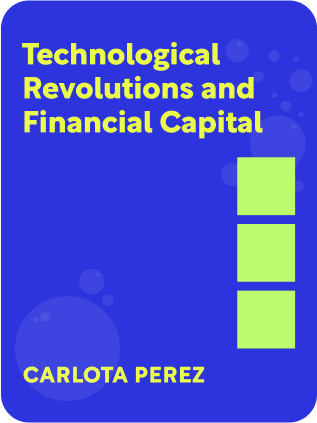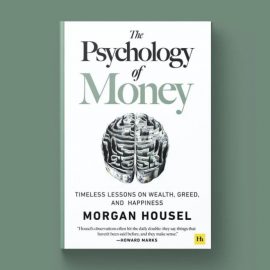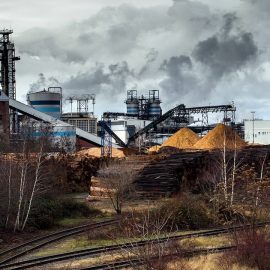

This article is an excerpt from the Shortform book guide to "Technological Revolutions and Financial Capital" by Carlota Perez. Shortform has the world's best summaries and analyses of books you should be reading.
Like this article? Sign up for a free trial here .
What is real value in a technological revolution? How does real value align with the phases of these industrial revolutions, and why does it matter?
Real value and paper value are two important parts of phase 2 in technological revolutions. These determine the value of a new technology and its potential for economic growth.
Read more about real value, paper value, and phase 2 below.
Phase 2: Frenzy, Real Value, and Paper Value
The new paradigm becomes a significant force, overcoming resistance of the old paradigm.
Intense technological exploration occurs. New markets are created and old industries are rejuvenated.
- High technological velocity causes premature obsolescence, creating new products before users have learned or amortized their investment.
The infrastructure begins to be laid out: suppliers, distribution channels, skilled labor, cultural adaptation. (This infrastructure is critical for the later Deployment phase.)
Financial Capital Becomes Exuberant
Financial capital takes over. Convinced it can thrive on its own, enthralled by its new magic rules for inventing a new sort of economy, it separates from production capital.
Financial capital becomes inebriated with the high levels of profit in the new industries and expects the same from all investments.
Financial capital is convinced it’s discovered a recipe for generating profits, which is then repeated over and over, without concern for fundamentals.
- Thus canals were created in the 1790s from river to river with inefficient routing.
- Thus railways were created in the 1840s where demand was doubtful and engineering difficult.
- Thus the automobile liberated real estate values in the 1920s from the constraints of urban centers, since any territory could be made valuable when connected by roads.
- Thus dotcoms were created in the 1990s with little evidence of underlying demand.
Investment firms take center stage, even outperforming the production capital stars of the boom.
Finance diverts from wealth creation to finding whatever objects of speculation are at hand. This includes real estate, gold, art, etc.
Production capital has no choice but to adapt to the new rules. New and old producing firms must bend their decisions to provide the high short-term gains demanded by investors.
- This includes pressure to commit fraud to maintain profit levels, as in Enron and Worldcom.
Because of limited diffusion to the broader market, the real opportunities are relatively few, so financial capital develops sophisticated, speculative instruments to make money out of money. Derivatives, junk bonds, and other instruments bring in capital from wider sources, making “everyone an investor.”
A phase of frantic investment occurs, usually typified by a stock market boom. This is a period of speculation and unashamed love of wealth. Individualism reigns.
Financial capital thus generates a magnet to attract investment into the new revolution.
A Growing Gap Between Paper Value and Real Value
The gap between paper values and real values widen. This is a structurally unstable acceleration of diffusion of the paradigm. Notions of the real value of anything are lost.
As assets increase in price, confidence grows that they will continue to do so. Excitement and feeling of prosperity are the overriding emotions. This is the new world, promising unending bliss. (Shortform note: the disappointment of the previous revolution’s Maturity phase probably stokes this further. “This is my chance to reverse the last many years of stagnation.”)
New and old firms come to the gambling house to play the capital gains game, without fulfilling strict profitability criteria.
New millionaires appear. They want to multiply their wealth at the same rate as which they made it, and so they redeploy idle capital with high pressure to generate profits.
Since profits are amazing (at least on paper), everybody – “including widows and orphans” – becomes aware of incredible possibilities. They enter the financial markets, a foreign territory to them, to get a piece of action.
Fundamentals are irrelevant in this new technological age, when the future is unknown and possibilities endless. So strange business plans are readily accepted. “Who really knows what’s possible? It’s a time to place bets.”
The newly rich have the hubris to believe it’s their own superior insight and intuition that led to growth, not the circumstances of the period.
Participants refuse to recognize the delusion that the bubble might be inflated. (Shortform note: a few psychological effects could be at play here:
- Fast adaptation to the new normal makes people acclimate to the new wealth level as normal. Thus, with dopamine unsatiated, they want only to reach the next high.
- The wealth effect makes people behave and spend as though they’re rich. Confronting the idea that they might not actually have wealth would require them to dial back their lifestyle.
- Loss aversion prevents people from readjusting their behavior and having to come down from the high of being paper millionaires.
- Ego about being an investment genius makes people unwilling to accept they are merely rowboats on a tide they can’t control.)
The old economy still exists and is relatively stable, while the new technology is becoming rapidly cheaper. Therefore, there are really “two moneys” at work here with rapidly changing relative values, making proper valuation of companies difficult.
- For example, in the 1960s, five cars could buy one computer. In the 1990s, one car could buy twenty computers. So who’s to say that Yahoo is overpriced?
The increase in the volume of transactions and number of actors involved attracts even more money and more actors into the game. These are self-reinforcing virtuous cycle effects.
Possible indicators of irrational exuberance:
- Separation of stock market values from GDP (which should show real growth)
- Size of derivative economy relative to assets
Social Tensions in Frency
Ethics soften. The regulatory framework is impotent to govern the new technology (for which there is little legal precedent), and is even seen as hindering the way to a successful society.
- Being rich is good – anything else is failure. People getting wealthy overlook ethics and due diligence.
- This leads to a permissive attitude conducive to corruption and illegal activities. Social resistance to unethical activities is less organized.
- Easy wealth made with other people’s money becomes irresistible. Swindlers arrive.
To avoid harmful price competition, the new firms move toward oligopoly/cartel-type agreements.
Income distribution becomes polarized, as modern firms and regions accelerate past the sluggish incumbents.
- Old industries, firms, regions that cannot take the modernization path deteriorate, causing a vicious spiral of lack of funds as investors pull money out to finance the new revolution, leading to lower growth.
- Debtors that took loans to redeploy the established paradigm become fragile. The benefits of redeployment may be insufficient to amortize debt, especially as the new technological revolution takes hold and obviates the prevailing paradigm.
- Increased foreign control in this time of weakness further weakens debt-paying capacity.
Supply of the new technology outstrips demand. Income concentration at the upper end becomes an obstacle for mass adoption and full economies of scale. Excess money is poured into furthering the technological revolution, including its infrastructure.
The leading countries that feel threatened by free competition often take protectionist measures.
Through all this, financial capital is unwittingly attracting the funds necessary to install basic infrastructure and facilitating social learning, paving the way for the full unfolding of the revolution during Deployment.
Break: Turning Point in Real Value and Paper Value
The irrationally exuberant bubble bursts, causing a recession and social unrest. This is the trigger for regulatory and institutional change to adapt to the new revolution.
Three tensions make the Frenzy impossible to sustain indefinitely, bringing on the recession:
- Real wealth cannot be produced at the same speed as paper capital gains.
- Premature saturation: concentration of the new wealth in a small fraction of the population limits market size and prevents the economies of scale that enables further growth.
- (Possible alleviations of premature saturation: export markets, government spending for wars, and income redistribution.)
- Social unrest: increasing wealth inequality causes anger and violence to erupt.
Financial Capital is Humbled
Paper values are brought back in line with real values.
Humbled by the evaporation of paper gains and pressured by the victims of semi-fraudulent practices, financial capital is more willing to accept regulatory safeguards.
- Accountancy and disclosure legislation are common regulations.
- Firms can decide to self-regulate to avoid government supervision.
The significant failure of the bubble bursting is necessary for a regulatory change. Without these seismic shifts, financial capital would never abide by regulation.
The power shifts from financial capital to production capital.
- It is production capital that is mainly interested in fulfilling the technological trajectory, to profit from the investment already made. Thus its incentives are aligned with diffusion of technology and mass expansion of demand.
- In contrast, financial capital tends to prefer short-lived capital gains rather than long-term, dividend-producing capacity.
- “Securities analysts believe that companies make money. Companies make shoes!” – Peter Drucker
In Frenzy, financial capital separated from production capital and took on a life of its own. In the Turning Point, financial capital and production capital recouple. This recoupling is necessary for deployment and ushering in a golden age of more harmonious growth. Prior to this, too much tension exists to fully reap the fruits of the new growth potential.
The Tone Shifts to Long-Term Growth and Diffusion
Institutions are set up to encourage diffusion of the new paradigm.
- In the second revolution of steam power and railways, legal frameworks allowed for safe and reliable participation in capital markets to fund large investments like railways.
- In the fourth revolution of mass production, salaries, welfare, and unemployment enabled stability in consumer purchasing of mass-produced goods. Institutions for international finance (IMF, World Bank) and protective agencies (FDIC, SEC) were created.
The social values pendulum swings from individualism in Frenzy to collective well-being in Deployment.
- The state should promote income distribution, social safety nets, and restore real values over paper ones.
Institutional choices will shape the next two phases. With one set of choices, social cohesiveness, social safety nets, and income redistribution can happen – with another set of choices, selfish prosperity will continue.

———End of Preview———
Like what you just read? Read the rest of the world's best book summary and analysis of Carlota Perez's "Technological Revolutions and Financial Capital" at Shortform .
Here's what you'll find in our full Technological Revolutions and Financial Capital summary :
- What happened during the 2000 tech bubble and the 2002 crash
- The 5 technological revolutions that reshaped society since 1771
- How you might be able to predict and prepare for the next technological revolution






